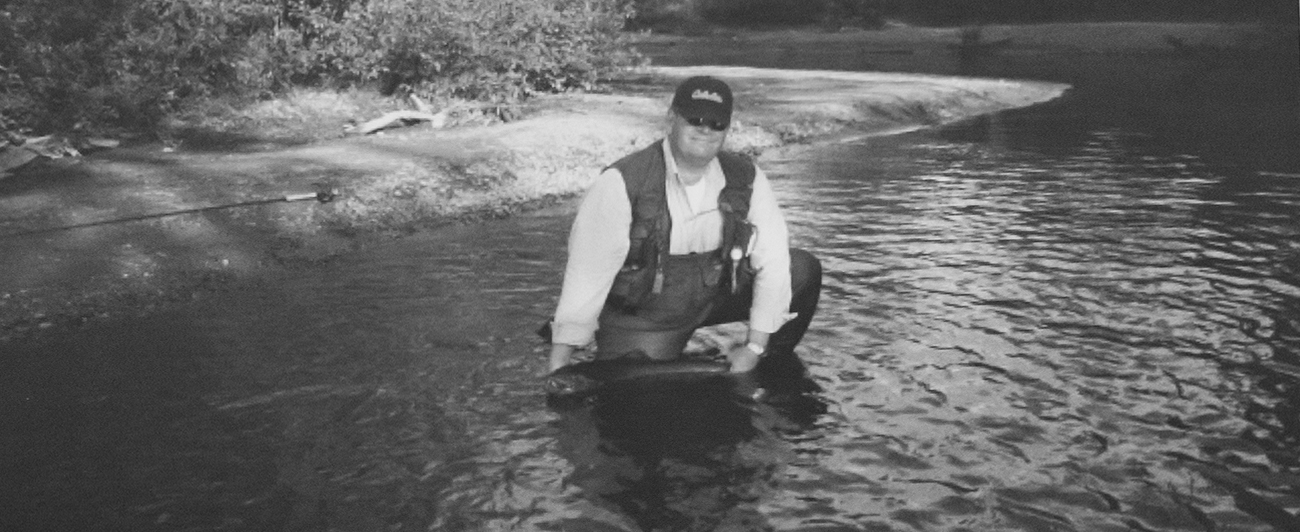Mystery
Down The Path
The Disappearance of Ronald Scheepstra
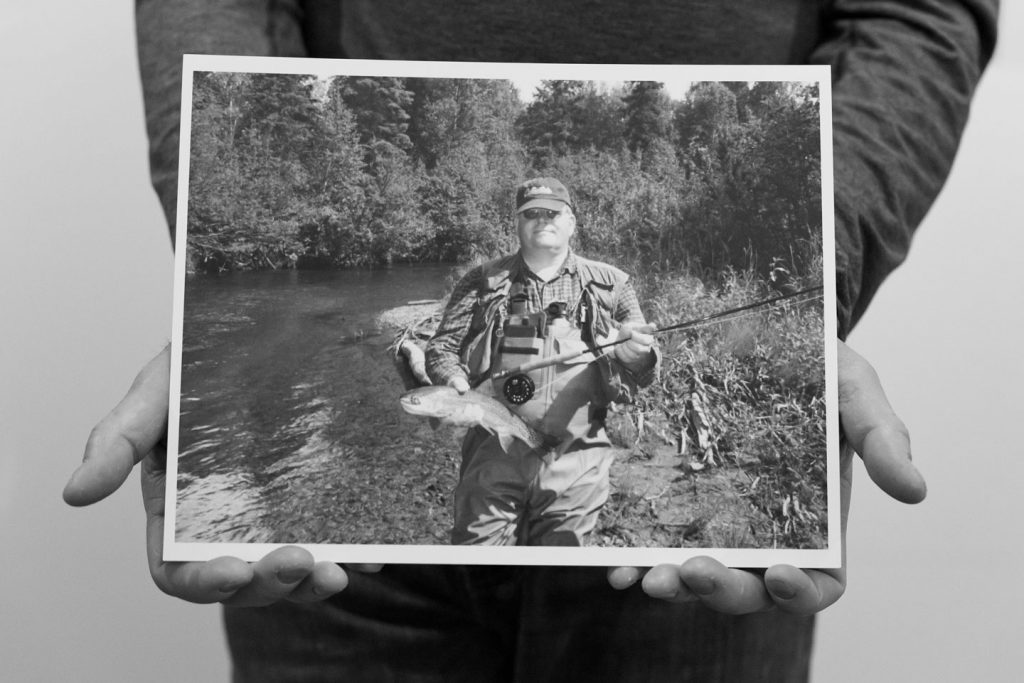
ABOVE Ron Scheepstra. Photo courtesy of Cindy Scheepstra.
1. Ron’s Gone
On April 11, 2009, Ronald Scheepstra began his morning much the same as he had on past flyfishing trips to Xcalak, Mexico. The 49-year-old was on a do-it-yourself (DIY) adventure to the coastal village of Xcalak, about a 5-hour drive south of Cancun on the Yucatan Peninsula just north of the Belize border. Scheepstra and three friends were there to stalk the shallow flats for bonefish, permit, tarpon and barracuda. If it swam, it was a target.
That morning, the group of anglers drove two cars to an area known locally as La Aguada, where they split into pairs to walk the flats and look for fish. For unknown reasons, Scheepstra broke away from his fishing partner and headed back toward the rental car.
He was never seen or heard from again. Looking at the case now—10 years removed—is like trying to investigate a crime that was never actually a crime.
Michael Graham was in Xcalak in the Spring of 2009 on a self-described walk-about. He spent time camping, flyfishing and exploring the area in a kayak. When Scheepstra went missing, he heard about it on the evening of the disappearance. The next morning, he and others were on the edge of the mangroves ready to search for the missing American.
“I was trying to look at the facts. I was trying to look at it rationally. If he had gotten lost in La Aguada, there would have been some evidence,” said Graham several years later.
The missing person poster of Scheepstra includes his name, age, date of birth and a picture. The photo shows a white male who looks to be an affable guy. He’s wearing small wire-rim glasses, a red Hawaiian-style shirt with yellow flowers, and he’s smiling. He was a big guy at 6’1” and 317 pounds, with blue eyes and blonde hair.
Scheepstra had dual citizenship. Born in the Netherlands, he was living in Lufkin, Texas, with his wife Cindy Scheepstra, and traveled internationally extensively for both work and pleasure.
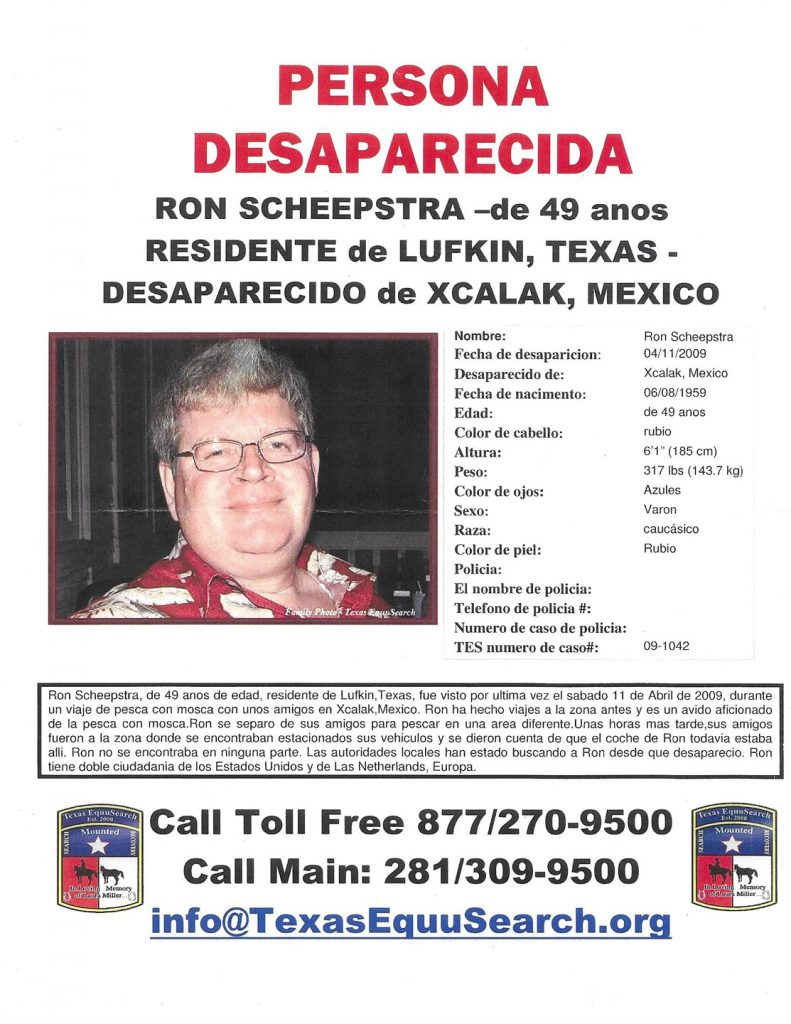
ABOVE Spanish language missing poster that was circulated from Texas south through Belize.
The missing poster states:
But this doesn’t tell the whole story about Scheepstra, or his friends who were fishing with him that day. From the moment news of his disappearance broke, there is a lack of clarity regarding how the events unfolded; who went where, at exactly what time, and other details. One of the main reasons for this is that none of the three anglers who were with Scheepstra that day ever made statements that were captured on paper and shared by the media.
Scheepstra was fishing with two German nationals named Michael and Bernard, as well as his best friend from the Netherlands, Otto. One of these companions is now deceased. At the time of Scheepstra’s disappearance, his friends refused all media inquiries and it appears that their intent remains unchanged today.
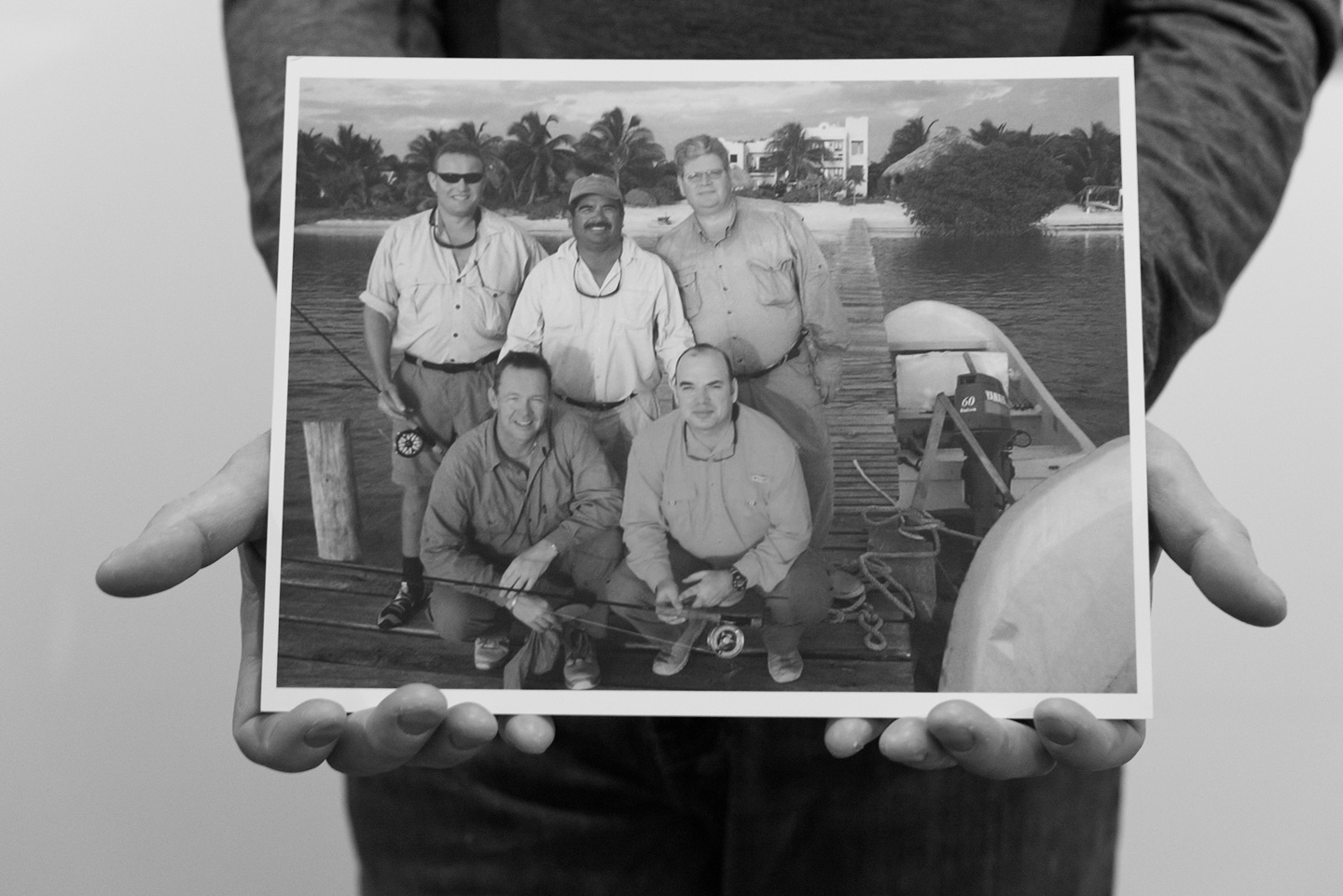
ABOVE Ron Scheepstra (back row, right) and companions in Xcalak, Mexico. Photographer unknown.
Shortly after Scheepstra disappeared, his wife was notified by the U.S. Consulate in Mexico. She immediately left for Xcalak. From the beginning, Cindy was convinced that her husband had crossed paths with criminals or had been abducted.
“The total lack of evidence points to the fact that he had to have been abducted. There has to be foul play involved,” Cindy said in an interview in 2009 with local media near her hometown. “There was absolutely nothing found, not a hat, glasses, water bottle, nothing—it’s like he vanished.”
A local Mexican news outlet, Noticaribe, published a report on April 17, 2009 – just six days after Scheepstra disappeared. It described the early investigation and suspicions held by local Mexican law enforcement and the attorney general’s office in the state of Quintana Roo. The article also gives a glimpse into the critical early days of the investigation.
The article estimated there were 70 people from law enforcement and other government agencies participating in the search and investigation. It highlighted early on that there were several lines of inquiry.
The first theory put forth posited that Scheepstra disappeared on his own to facilitate the collection of life insurance money for his spouse. The second surmised that his companions, who had reported him as missing, were somehow responsible. Lastly, it was suggested that some type of accident had occurred. Officials were clear about their goals: to find the whereabouts of Scheepstra, clarify the facts and, where appropriate, define responsibilities.
The Director of Preliminary Investigations of the Attorney General’s Office in Quintana Roo, Marco Antonio Álvarez Trejo, said this of the self-engineered disappearance theory in the Noticaribe report: “In time it will be investigated, but if this has happened, it is not a crime to have faked a death; but if it were to collect insurance the aggrieved insurance company would be suffering a fraud, and that conduct is punishable.”
No one – including Scheepstra’s fishing companions and his wife – was ever charged with a crime. No charges of fraud were ever brought. Because a crime was not officially committed, Scheepstra’s disappearance was never officially investigated by U.S. Law Enforcement.
One of the most challenging aspects of Scheepstra’s disappearance is the lack of clues. Whether Scheepstra had a health emergency, came across a predator or simply got lost, it is a mystery that challenges geographic conditions, common sense and the laws of nature. If he came across the wrong people at the wrong time and was kidnapped or murdered, it was the perfect crime. If Mexican authorities were correct in their initial suspicions about a self-engineered disappearance, it was a flawlessly executed escape plan and well-orchestrated conspiracy.
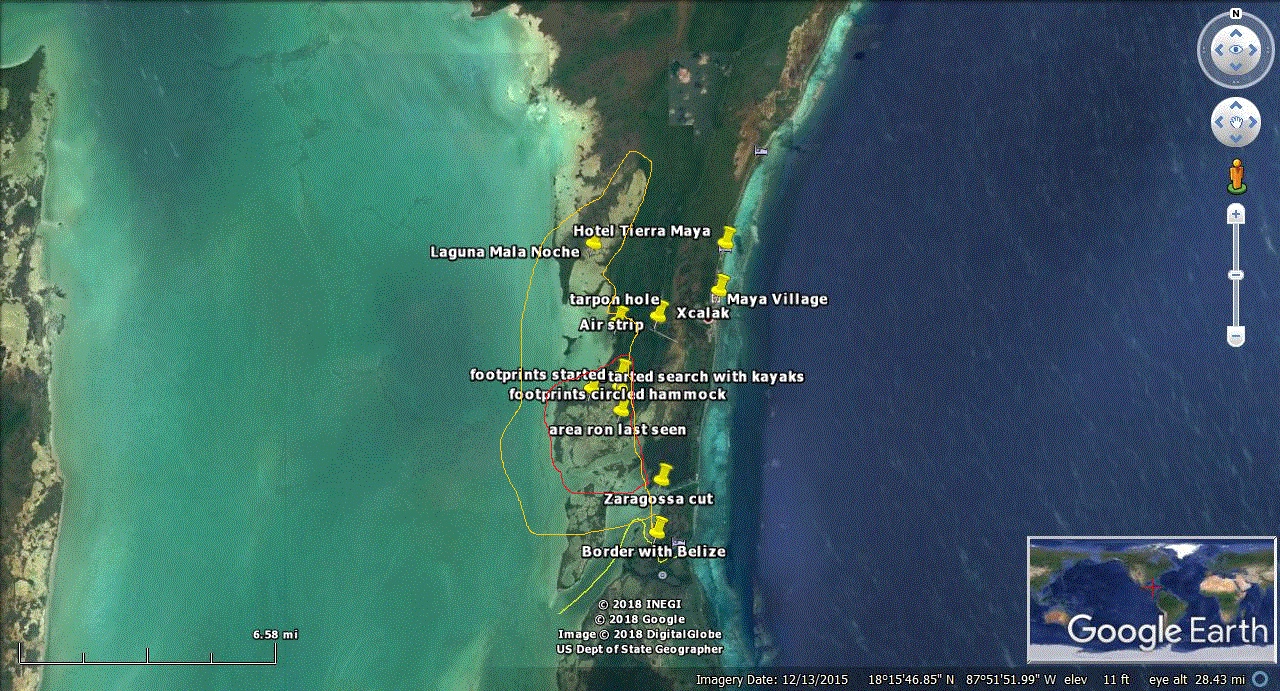
ABOVE Map of Xcalak and surrounding areas marking locations important to the story. Courtesy of Kim Calkins
2. April 11, 2009
There are a few hours over the course of April 11, 2009, that are critical to this story.
That morning, Scheepstra and his three fishing companions had breakfast at the Tierra Maya Hotel in Xcalak. It was the first fishing day of their trip, but they were familiar with the DIY program. Early that morning, a lodge employee saw Scheepstra out at his car packing gear. She brought his lunch out to him. He drove away and headed south; this is the last time anyone from the hotel saw Scheepstra.
The drive from the hotel to where Scheepstra and his friends parked their two cars is roughly 6.2 miles, about 15 minutes by car. Depending on the time of day and traffic, it could take as much as 30-40 minutes. The ride involves driving right through the village of Xcalak.
Kim Calkins, who managed the Tierra Maya Hotel at the time, saw Scheepstra the night before he disappeared after he arrived at the hotel.
“Scheepstra and three friends took two cars that day to La Aguada,” said Calkins. “There are a lot of productive flats out there that are more easily accessed on foot than by boat. They parked and walked in to start fishing.”
When the group began fishing they broke up into two groups of two anglers. Scheepstra fished with Otto, and Michael and Bernard paired up.
“According to [Otto], Scheepstra climbed up onto an embankment into an area he wasn’t very familiar with. As he walked away, he said something like, ‘You go on. I’ll be fine,’” said Calkins.
Once Scheepstra parted ways, Otto continued walking the flat.
This is the precise moment when Scheepstra seemingly vanished.
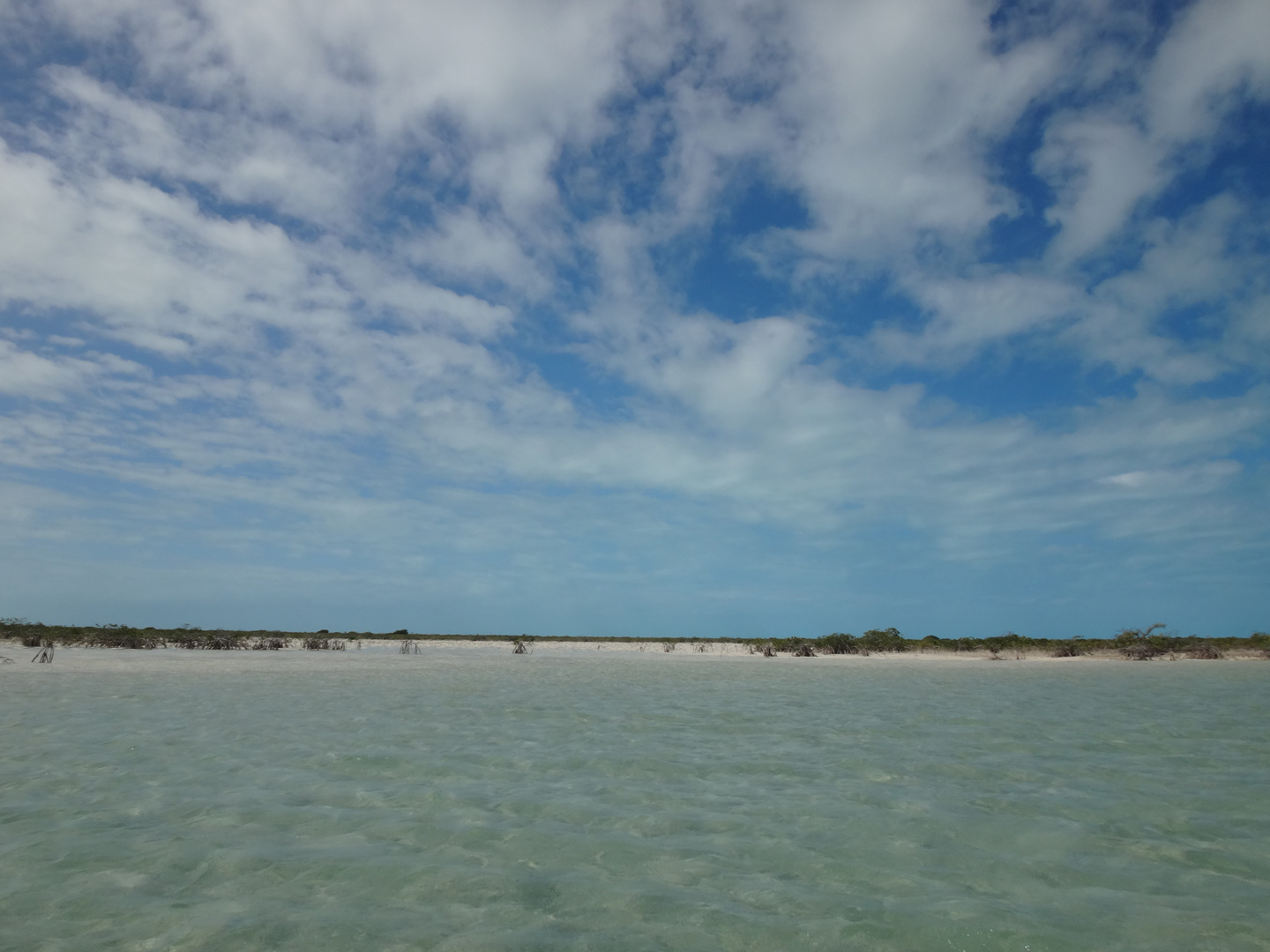
Photo: Jason Rolfe.
“The best friend [Otto] continued to fish in the general area for another hour or so until the other two friends linked up with him and suggested they fish another area entirely called Tarpon Bay. They exited through the lagoon at that time, went back to their car and left for the other location,” said Calkins.
This is a critical detail and moment in the timeline and sequence of events. At this time—when they exited the flat and went back to the two cars—Scheepstra’s car was still there. If Scheepstra’s car is there and he is not, and at least an hour has passed, it would seem obvious that he never made it off the flat and was not on his way back to the hotel.
At this point, according to Calkins’s recollection, the three anglers left in one car without Scheepstra. Scheepstra’s car remained where it was originally parked and they drove to Tarpon Bay. Calkins confirmed this sequence of events as relayed to her by Scheepstra’s friends on the day he disappeared.
“They said they fished for an hour there [Tarpon Bay] before returning to the hotel. They had a couple of beers and relaxed, and when Ron didn’t return, they went back out to La Aguada to look for him. Ron’s car was still there,” said Calkins.
Calkins did not believe returning to the hotel was a normal part of this group’s DIY fishing program.
After having a few beers at the hotel, it appears that Scheepstra’s friends decided to try to find him on their own. This would have taken them back through the village of Xcalak and out to La Aguada.
“They looked for him for about an hour until the light began to fail,” said Calkins. “They returned to the hotel around 7:30 p.m. When they told me Ron was missing, we radioed the Port Captain here and asked that she contact all available personnel from the National Park Office, the Marino [Marine] Base, the local Police Department, plus any local fishermen who were free to search for Ron.”
Calkins provides additional information and detail about how she and one of her staff learned of the missing angler.
“They [Otto, Michael and Bernard] returned to the hotel around 6:00 pm,” remembered Calkins. “Dave [Calkins’ husband] and I were in the office. We heard them. We heard their accents. I said, ‘Oh, the guys are back.’”
Kim was in the office and could hear—but not see—the three anglers.
“I said to Dave, ‘Good they’re back.’ I never dreamed that there were not four guys walking into that restaurant. They went into the restaurant, they ordered drinks and they had dinner. And at 7:00 pm Daniel [an employee of the hotel] said to them, ‘Hey where’s Ron, is he in his room or what’s going on?’”
So at about 7:00 pm, Scheepstra was finally considered a missing person.
“I blew up,” said Calkins. “I was out of that office. I confronted Otto cursing and swearing at him. ‘What the hell is going on? Where is Ron?’ I was so mad. They were there an hour—eating and drinking. I can’t even repeat to you what I said to them. I used so many curse words. I was so mad because we only had about an hour’s worth of light left. I just kicked into gear. I got on the radio with Susy the port captain and told her that we had a missing fisherman.”
At this point, the search for Scheepstra began in earnest.
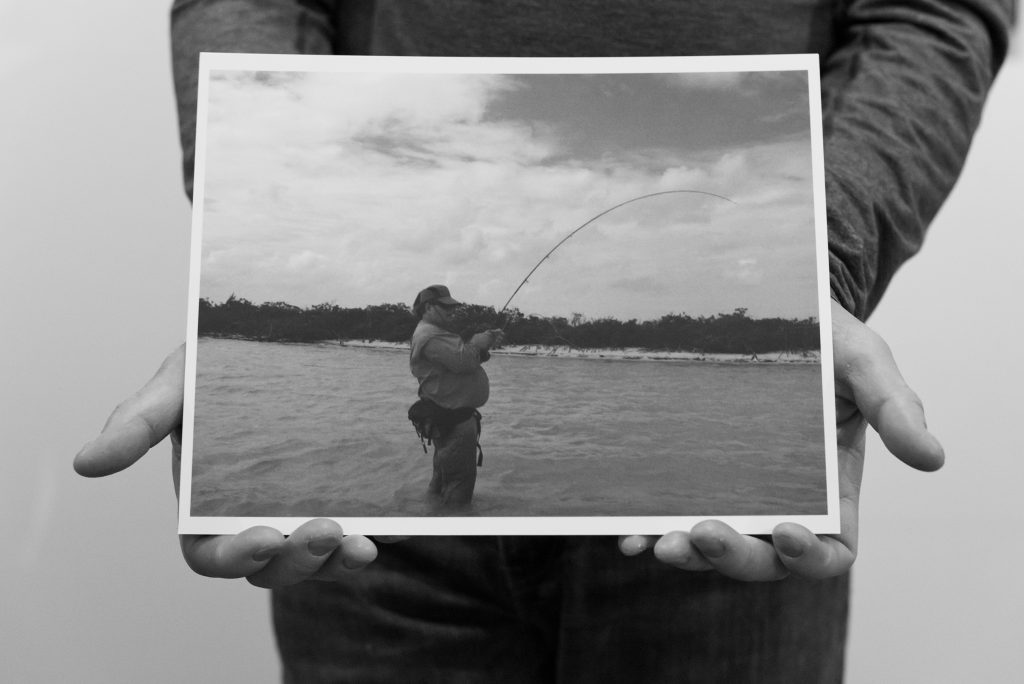
ABOVE Ron Scheepstra. Photographer unknown.
3. The Search
The search was intense and continued for weeks.
“I sent someone from the hotel with [Otto] to the area Scheepstra was last seen so the searchers would know where to start looking,” said Calkins, while describing the first few hours of the search effort. “Most everyone returned around 1:30 am, except the [Marines] who continued searching all night long.”
Almost immediately, issues and questions about the sequence of events that day created friction among those involved in the search effort.
“The day he went missing we were trying to figure out why they were separated,” continued Calkins. “The first thing they told us was that at 2:00 pm Ron started acting weird. He started huffing and puffing and walked through a school of fish. Then Ron said he was going to fish his way back to the car. That was what was initially told to us.”
“Then, in subsequent days, I asked the same question, because they were already at the hotel at 2:00 pm.” Calkins said this with vigor, trying to make a point. “So when they told me that they last saw Ron at 2:00 pm and then went to Tarpon Bay that didn’t make sense, because they had come back to the hotel and sat on the beach for an hour drinking beer.”
These discrepancies bother Calkins to this day.
“So I kept asking the same question every day. ‘When was the last time you saw him?’ I pretended like I forgot what they told me,” said Calkins. “So the next day when I asked, it was ‘2:30.’ The next day it was ‘3:00.’ The next time I asked it was ‘3:30.’ The final time was when we were in the meeting at the hotel restaurant and Cynthia [Cindy] had come down already and she asked Otto and he said they last saw Ron at 4:00 pm. So there is that two hour discrepancy… where… they are lying.”
With tensions high from the beginning, the news of the missing fisherman spread fast, reaching the village of Xcalak on the night of the 11th. Michael Graham remembers hearing about the incident while out with a friend and they both agreed to help in the search the following morning.
“That morning, shortly after sunrise, we were the first people to arrive at the search area,” Graham said in a written statement to members of the U.S. Consulate just seven days after Scheepstra’s disappearance. “We split up in boats but stayed within sight of each other. I chose the area closest inland yet still floatable. It wasn’t very long that I encountered a singular set of footprints in the shallow water and followed them to land….”
Graham’s report continued for two pages and described the general proximity of where Scheepstra was last seen, what Scheepstra was wearing and his search strategy. He reported following large footprints in the mud and sand fruitlessly and also describes his first meeting with Scheepstra’s fishing companions.
“It was at this point we noticed other searchers in the distance,” Graham said. “The first person we encountered was one of the missing man’s companions and we inquired as to the last spot he was seen. The man replied it was right there and when we asked which direction his friend had traveled he was unable to give us a specific direction.”
Graham later reported the man who he initially ran into when searching La Aguada that first day was Otto.
“I traveled to one end of the bay and he the other,” reported Graham. “No signs were found so we both returned to the area where the footprints were found. We quit our search after about six hours due to the heat and by that time the entire area was crawling with searchers. Later that day I heard a helicopter nearby and felt confident the man would be located.”
Based on the specific area Scheepstra was last seen, his size and physical condition, his ability to cover ground and distance, combined with how quickly there were people searching the area, Michael Graham was confident that one way or the other Scheepstra was going to be found. But he was not located. The search continued the following day with additional searchers and more boots on the ground.
“The next morning [April 13] we had again arrived early and met the missing man’s fishing companions who were already there. The men were speaking German and, being born in Germany and having a German mother, I used to speak German very well,” said Graham.
Graham tried to engage with the three men in German to get a better understanding of what exactly happened two days before thinking that these details could help with their search efforts. Things began going downhill fairly quickly and Michael documents this and his concerns officially in his report.
“I then spoke to them in German. I asked about their friend and to describe what happened the day he became lost,” said Graham. “They described Scheepstra as ‘angry’ in English, but one of the men corrected this, telling his friend in German, ‘Don’t use that word,’ and told me in German he meant to say angstlich, which basically means angst filled or worried. Otto introduced himself as the man’s oldest friend of 30 years and said they had fished out to a point, then Scheepstra decided to return to the car. Otto said Ron’s last words to him were, ‘I’m going back, you take care.’”
On the second full day of the search, Michael returned to the area with the search party and searched with Scheepstra’s friend Bernard. At this point he describes his deteriorating interactions with the three men.
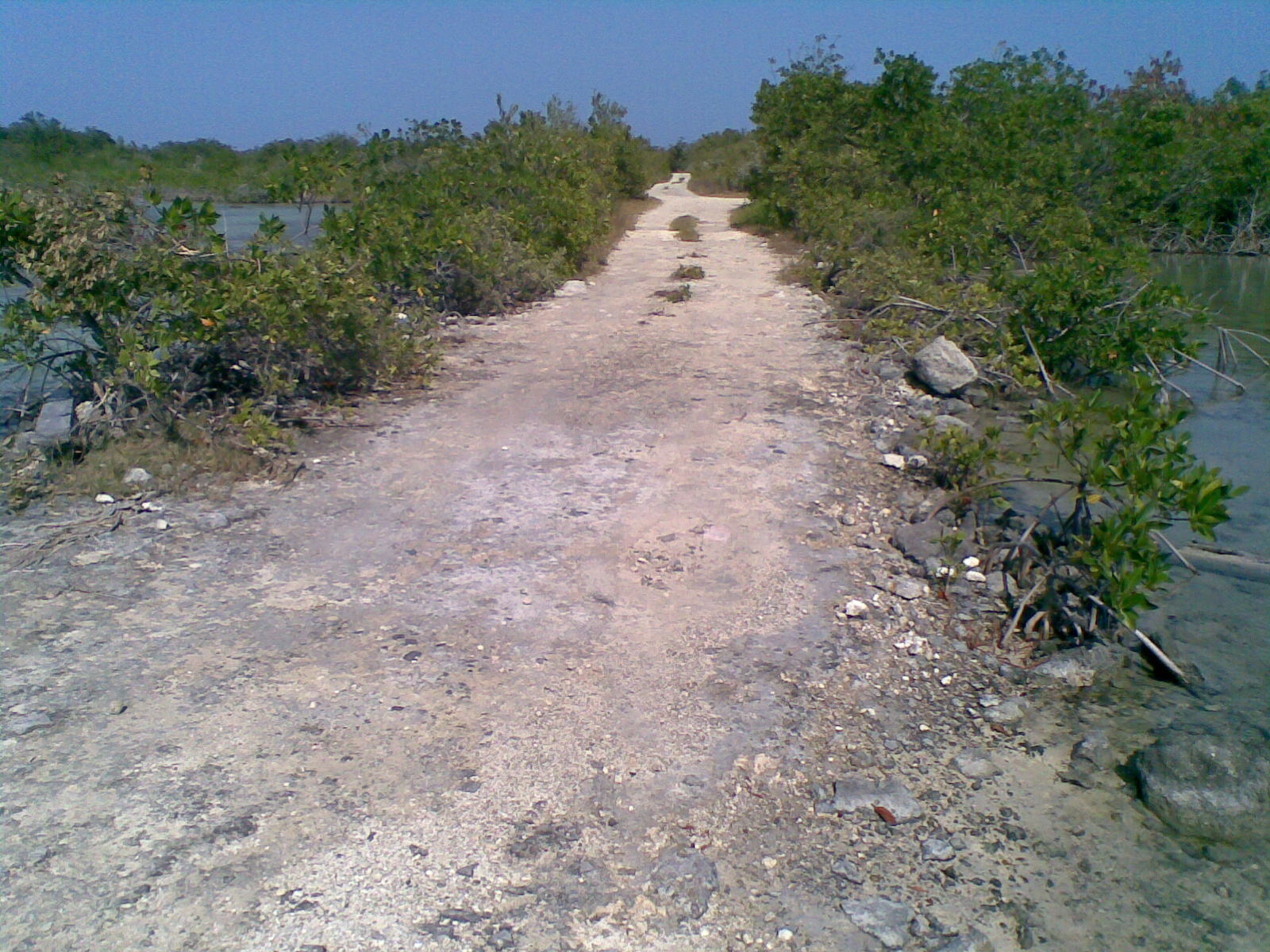
ABOVE Road in La Aguada, near the location where Ron Scheepstra was last seen. Photo: Steve Aguirre.
“We swept the area again to the road,” reported Graham. “Returning to the vehicles I saw that two of the men [Scheepstra’s friends] were the first ones back and their general sense of apathy was beginning to irritate me. When asked what their plans were, they said they planned to get back to fishing the next day as they still had many days left in their vacation.”
This struck Graham as odd.
Calkins also talked about her concerns and the activity of Scheepstra’s friends directly after he was reported missing. Did some of his companions in fact fish on April 12th, and abdicate the first full day of the ground search? Yes she confirmed: the day after Scheepstra disappeared at least one of his friends went fishing.
“The next day Michael [Scheepstra’s German fishing companion] went out fishing with a fishing guide; he went out with Alberto,” said Calkins.
Except for the second full day of the search when all three joined the search party, it appears Scheepstra’s friends continued to fish throughout the rest of their vacation.
Graham continues his report with facts as well as analysis of the situation.
“I have many years of experience working mental health in a crisis intervention arena and these men [Otto, Michael and Bernard] were not in crisis,” said Graham. “Hell, with the exception of Otto they acted like they were inconvenienced by the whole thing. Affect and behavior did not match the severity of the situation.”
The search continued in earnest for three or four days and included many people from the local community. But soon, many began to draw the same grim conclusion.
“All that they saw were those footprints,” said Calkins. “But there was nothing found. There was no hat or rod or candy wrapper… there was nothing. Not one thing was found that would indicate there was someone behind those foot prints; obviously there was someone behind the footprints but we don’t know if it was Ron or not.”
After being notified of her husband’s disappearance, Cindy Scheepstra, her daughter and Scheepstra’s sister from the Netherlands flew to Cancun and traveled to Xcalak. After they were briefed on the situation by local law enforcement and members of the U.S. Consulate, Cindy visited the search area and participated in interview sessions with local authorities and officials from the U.S. Consulate.
“The U.S. Embassy had a young man and woman who took me to a room and asked me all kinds of questions about Ron’s mental health,” Cindy said. “What frame of mind he was in? I’m a psych nurse; I know what they were doing. They thought he had either walked off or committed suicide, which I knew neither one of those were true. I assured them that he was in a good frame of mind and that he was a very stable individual.”
The questions and interviews with authorities continued. Cindy was taken to a police station in neighboring Maualhal and questioned by the local police. The police’s initial theory was that Scheepstra staged his own death for insurance reasons, something Cindy emphatically denied, adding that she and Scheepstra had very little debt and that she managed the family’s finances. She would have known if there was something out-of-order financially.
What became very clear shortly after Cindy arrived in Mexico is that the searchers had come to the stark conclusion that Scheepstra was no longer on the flat at La Aguada—or anywhere else near Xcalak for that matter.
Cindy, her daughter, Otto, Michael, Bernard and Scheepstra’s sister remained at the hotel for nine days after Scheepstra’s disappearance. Nothing was ever found, and they all left Mexico.
“The last thing that Cindy said to me as she was going to get in her car to head back to Cancun was, ‘Kim, what happened to my Ron?” remembers Calkins.
“I said ‘Cindy, you need to talk to Ron’s friends.’”
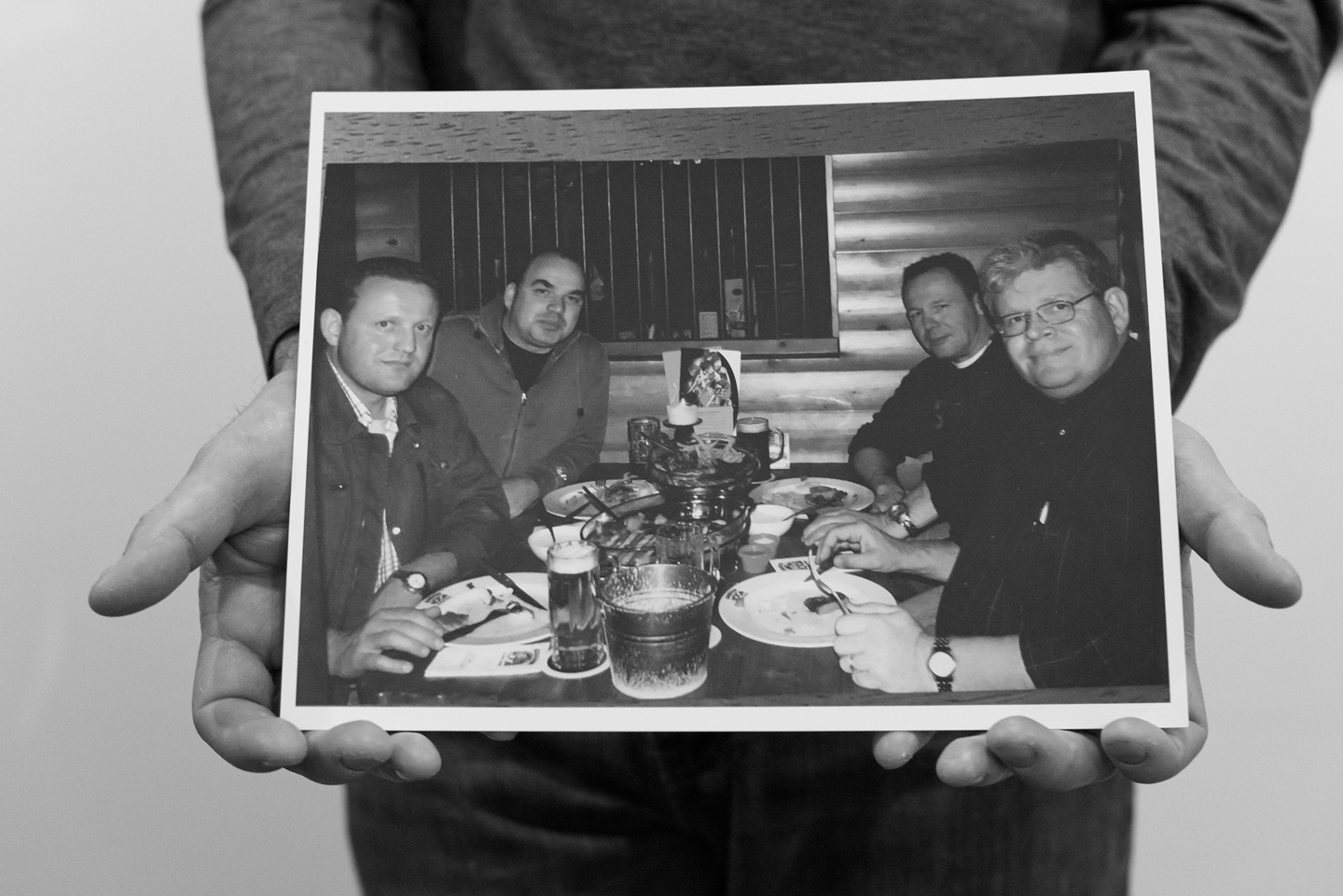
ABOVE Ron (lower right) and friends. Photo courtesy of Cindy Scheepstra.
4. The Scenarios
Most agree there are four principle scenarios that could explain what might have happened to Ronald Scheepstra.
Only Four.
It is possible that Scheepstra had a catastrophic health emergency—for example, a heart attack or accidental drowning. Understanding the area that Scheepstra was fishing, most people feel that it would be difficult for him to fall down or drown with no evidence of his body, clothes or equipment to be found. Even if Scheepstra were to have fallen into a soft mud depression, most feel that evidence of this would have become apparent in the following days, or that over the years some evidence would have been found.
A natural predator attacking and killing Scheepstra is unlikely, but cannot be ruled out. There are saltwater crocodiles in the area Scheepstra was fishing. The idea of a saltwater crocodile attacking Scheepstra came up early on in media reporting.
Michael Graham wasn’t convinced. “If you are asking if there are crocs that are big enough to do some damage to a man, there are; but there would have been evidence,” says Graham.
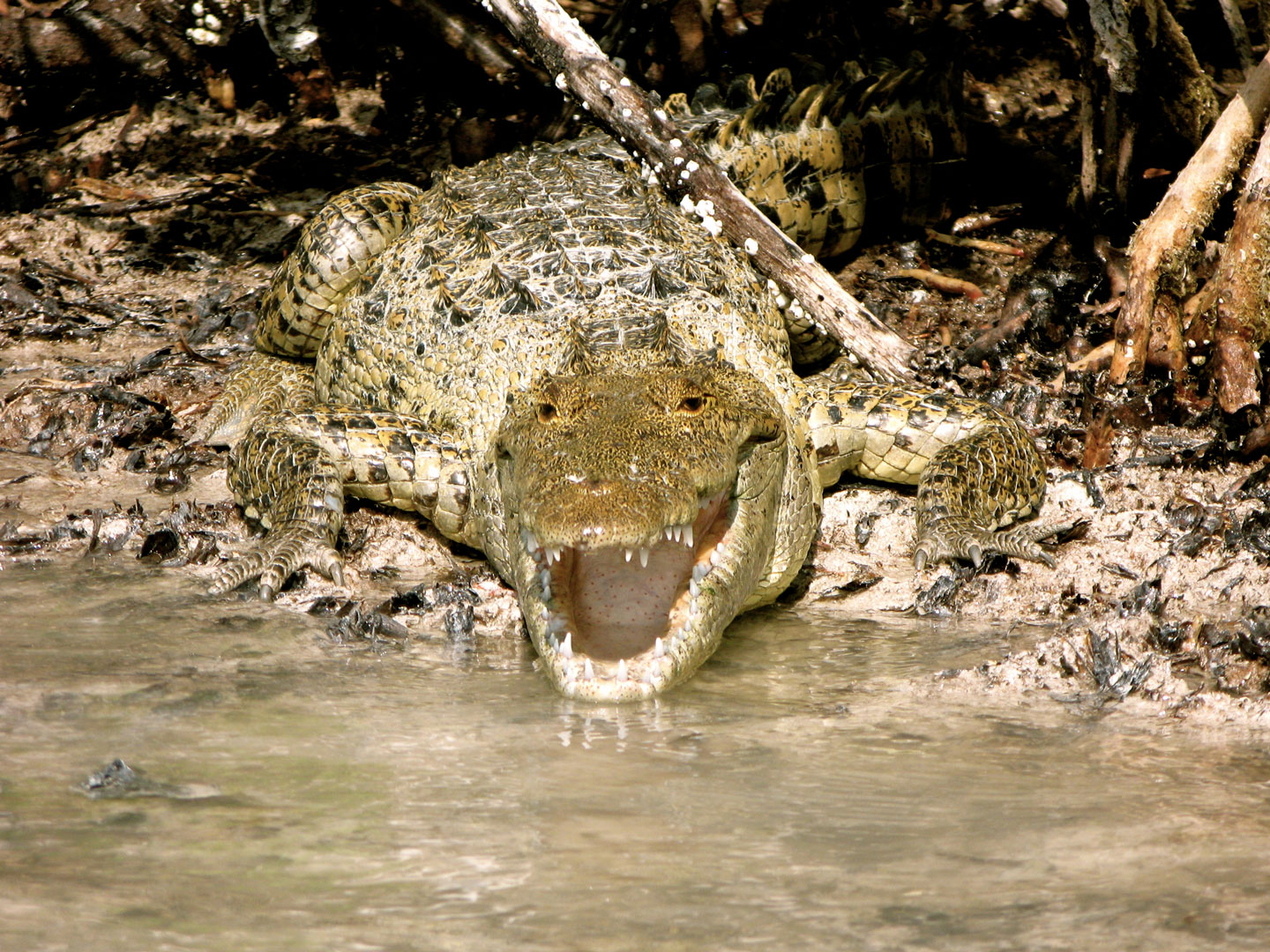
ABOVE Yucatan Peninsula Crocodile. Photo: Will Rice.
Scheepstra could have crossed paths with criminals and simply been at the wrong place at the wrong time. This has happened to countless people in Central and South America, in Europe, and in the United States. Running across bad individuals—and the possibility of kidnapping—is a theory that has been explored at length by investigators and officials. The fact that no ransom was ever demanded, and all of his belongings remained in his car, makes robbery and kidnapping a hard theory to digest. While the drug trade and cartel activity could be a part of this explanation, Xcalak, located very close to an active military base, has never been known as a drug transporting hot spot.
Cindy Scheepstra was widely quoted as believing that her husband had been kidnapped. In an interview with local news station KTRE9 in Lufkin, TX, she speculated about a very dark reason and outcome.
“There is no evidence, which tends to look like he was abducted; since there’s been no ransom [demand], there is some speculation he could have been abducted for the slave trade which is active in Mexico,” she said while explaining her theory early on.
Others agree this might be a possibility.
Jeff Dunsavage runs an organization called the Missing Americans Project. He founded the organization shortly after his brother went missing from Roatan, Honduras, in 2009.
“In that first year, April 2009 through April 2010, we had about 20 guys disappear with very strange circumstances,” said Dunsavage. He went on to talk about men who went missing in Mexico, Costa Rica, Guatemala and Honduras.
“It felt like around the first quarter of 2010 it was like someone turned off a spigot. These are places where if you murder someone nobody worries about hiding the body. Nobody thinks there is going to be an investigation. Nobody is going to care. They leave bodies on the side of the road, they dump them on beaches. So for these guys just to vanish, this has always gnawed at me. The thing I started looking into: was there a role of the organ trade. But it was like the spigot was turned off when we started asking those types of questions.”
Scheepstra’s sister, who also visited Xcalak with Cindy shortly after Scheepstra disappeared, has her own theory.
“There is no evidence, but when we went to the spot where Ron’s car was found and I stepped out of the car, I had this feeling [about] what happened to Ron,” she wrote. “He saw something or someone he shouldn’t [have]. Maybe a drug transport or something. Then he was taken at gunpoint and killed and dropped somewhere where no one would find him.”
A final theory posits the idea that this was a self-engineered disappearance. This was a leading theory early on in the investigation and many still believe this is the most probable explanation.
Graham has spent a lot of time thinking about Scheepstra. When comparing the theory of a self-engineered disappearance with other theories, Michael shared his assessment:
“Yes, that’s probably the most plausible explanation for all of that. The other scenarios just don’t add up. Yes, it’s possible that he ran into a bunch of guys running a load of coke from San Pedro [Belize], but it wouldn’t happen during the day. It would happen in the dead of night. And people would know about it. That’s just fantasy.”
But he also understands that each theory is about as believable as the next.
“It is all just conjecture,” says Graham. “Everything is conjecture because there is no hard evidence.”
Others disagree with the theory of a self-engineered disappearance. If Scheepstra decided he wanted to leave his life behind there is certainly no evidence of this. Peter Slort, a member of the Dutch consulate to the United States, investigated Scheepstra’s disappearance. He found no evidence that Scheepstra left of his own accord. To engineer one’s own disappearance takes immense planning, as well as equally immense monetary resources.
In 2012, a letter bearing the United States Congress’s seal was presented to the U.S. Department of State requesting a full investigation of Scheepstra’s disappearance. The letter was penned by US Congressman Louis Gohmert.
It reads:
“I am formally requesting that the Department conduct a more thorough investigation of the disappearance of Mr. Scheepstra until this matter is resolved. If the State Department is not prepared to investigate this matter more thoroughly in order to determine the whereabouts of Mr. Scheepstra, then it should issue a report of presumptive death.
“As way of background, Mr. Scheepstra is a United States citizen who disappeared more than three years ago (on April 11, 2009) when he was traveling in Xcalak, Mexico. The Mexican authorities conducted a search for Mr. Scheepstra at the time of his disappearance. The U.S. Consulate was also involved in some capacity during this search. Unfortunately, Mr. Scheepstra was never found and remains listed as a ‘Missing Person.’
Congressman Gohmert pressed on.
“A denial of a presumption of death document indicates that the United States government does not presume Ronald Scheepstra is deceased. If the U.S. government believes that Mr. Scheepstra is still alive, then it has the responsibility to continue providing assistance to an American citizen searching for her spouse who disappeared while vising a neighboring country until the matter is resolved.”
Four years later, in 2016, Ronald Scheepstra was officially declared deceased—although no body or evidence of Scheepstra was ever discovered.
Ronald Scheepstra began his day on April 11, 2009, just like many others. He was ready and excited to fish and explore new water. Whatever transpired in the six to eight hours after he left the Tierra Maya Hotel has left numerous people dismayed, heartbroken and confused. People should not just disappear—there is something starkly unbalanced about a vanishing of this sort. It’s likely that someone out there knows something, but unless someone comes forward with new information, Ronald Scheepstra will remain one of the disappeared.
To learn more about Scheepstra’s case, visit www.downthepathpodcast.com. A new podcast by Will Rice, called Down the Path, explores Scheepstra’s disappearance and includes interviews with many of those involved in the case. Search for Down the Path wherever you find podcasts to listen.
